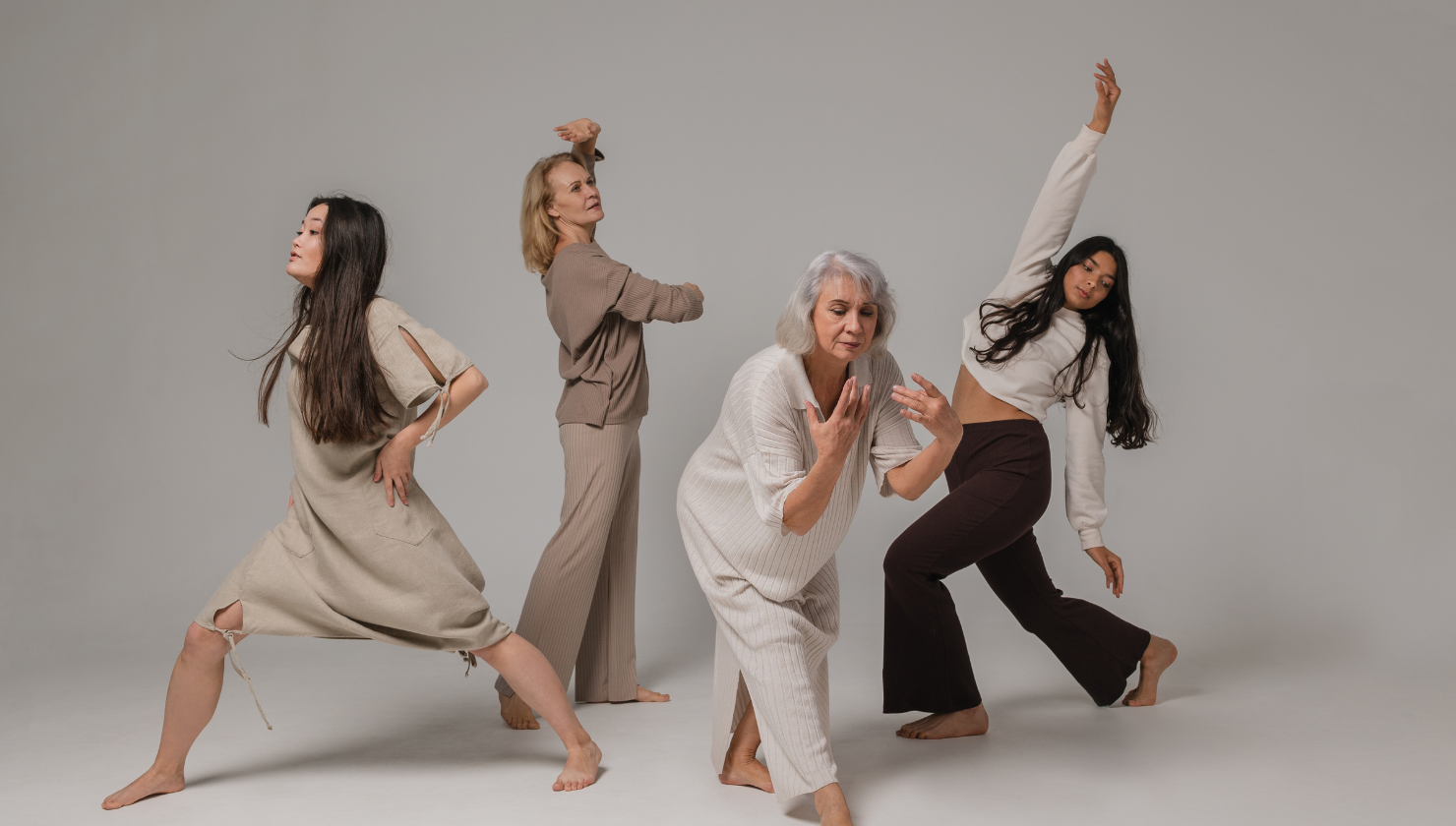Aging Gracefully: How Fascia Can Promote Healthy Aging

Ever noticed flare-ups on your body after moving in certain ways?
I was 18 years old, living in a body that felt 80 years older — some days, I wouldn't be able to sit on the toilet or take my shirt off, and I'd have digestive issues. I would see doctors, and they'd do several tests, some more uncomfortable than others, with no real answers. What was happening in my body?
Fascia, your body's connective tissue system (CTS), can contract like a muscle; it sends impulses and releases tension through your body through the CTS. Tools like foam rollers allow us to artificially liberate some of those tensions. However, similar to how using a stress ball might offer quick relief, these tools don't address the cause of strain or provide lasting solutions, like how meditation works for the mind.
For the body, if you can make those contractions on command (rather than passively through rubbing on foam rollers), you can refresh and open your tissue. You learn to work with your body rather than against it.
Whether you're 65 or 95, it's never too late to rediscover the joy of moving your body and navigate your way to healthy aging.
What Is Aging Gracefully?
Aging gracefully can mean different things to everyone. To some people, it might be about
physical appearance, fashion sense, or state of mind. In each scenario, it isn't about fighting against time, but rather about adapting your practices to support your changing body and tastes.
A lot of people talk about embracing the journey of life with positivity, dignity, and purpose as aging gracefully, meaning, accepting the body and mind's natural changes while continuing to learn and contribute to the world around you. As Cindy Joseph wisely said, "Aging is just another word for living."
Healthy aging involves maintaining physical health through proper nutrition and exercise, nurturing meaningful relationships, and pursuing passions that bring joy and fulfillment. Those who age gracefully often radiate a sense of contentment and wisdom that comes from a lifetime of experiences. They try to live fully and authentically at every age, appreciating the present moment while looking forward to the adventures that lie ahead.
At What Age Do You Start Losing Mobility?
While each case is different—I started losing mobility in my teens—often, people begin to notice tell-tell signs of aging in their skin, joints and metabolism during their 30s. Your metabolism starts to gradually decline at about age 20.
A lot of the things we are taught to do in our bodies aren't good for us. If you do them from the age of 15 to 35, your body becomes deeply stressed by your lifestyle, not just age itself. What one person might experience as muscular pain, another might experience as chronic headaches. Either way, your body is taking an additional toll, which in turn can impact your mobility.
Why Is It Harder To Move When You Get Older?
As you age, it can become more difficult to move due to a natural lack of hydration and loss of muscle mass.
The amount of lubricating fluid in joints decreases over time, cartilage thins, and ligaments shorten, making joints less flexible and stiffer. Similarly, in the tissues that connect muscles to bones, you lose water, causing stiffness and pain.
As pain becomes chronic, it can make moving even more difficult and cause fatigue. This immobility can lead to weakening muscles and bones, making muscle tears and bone fractures more likely. Reduced circulation and blood flow to the brain, which we regulate through movement, can have much more serious effects, and you might experience difficulties with balance and coordination.

Tips To Boost Your Health As You Age
By learning how to take care of your fascia, you learn how to age gracefully. When you listen to your body's signals and respond with gentle, persistent movements, you can begin to unwind deep tension and feel more comfortable in your own skin.
Fascia wraps into your body like red dye stirred in paint. We can identify it based on other systems. For example, one of the most common organs of fascia is the myofascial tissue that wraps around your muscular-skeletal system. The visceral fascia surrounds the organs in your abdomen, lungs, and heart, and the liquid fascia carries vital fluids around your body.
Since the fascia is so holistic, when you have an internal feeling of hunger, for example, the fascia records that and gives notes to the brain. It links diverse systems, like digestion with muscles. By taking care of your fascia, you can take care of your diverse systems more simply.
You can also help to promote bone, joint, and muscle health by:
- Calcium – Broccoli, kale, salmon, and tofu are all great sources of calcium.
- Vitamin D – Sunlight is our biggest source of vitamin D. Foods like tuna, salmon, eggs, and milk also help.
- Physical activity – Chemistry is rarely altered unless it is biologically programmed, but physical movement can affect your neurotransmitters. Walking, jogging, climbing stairs and weight training can all help you build strong bones and slow bone loss. They also help you maintain muscle strength and flexibility.
How Should You Plan To Exercise If You Want To Remain Healthy Past the Age of 40?

It's easy to stretch your fascia and age gracefully. You don't need hours to feel better. All you need to do is to have three movements in your daily life: traction, compression, and rotation.
Fascia is the grid of your body that regulates everything. It is 70% water and has to stay in a fluid state to stay healthy. When you want to move, fascia works like hydraulics: imagine pushing a syringe, water comes out, and when you pull the syringe, water comes in. Your body works like a series of compressions, pushing and pulling the syringe.
To remain healthy past the age of 40, look at life as a jungle gym and microdose your fascia:
- Traction – The pulling back of the syringe. Hanging off of the edge of the kitchen sink with your toes against the baseboard. You pull the fascia wrapped around your vertebrae and create suspension and lift in the body. It helps counteract the aging and wear and tear of gravity. Stretches also provide a hit of endorphins.
- Compression – The push. Dropping to the floor in a squat or bringing your knees to your chest while lying on your back. Compression on soft tissue spreads joints and alleviates the tension on joints as we age.
- Rotation – Rotation combines traction and compression and actually stretches and tones your body. Think of dropping a sweater in water. All the fibers get loose; that's compression. You take it out of the water, and all the fibers are dripping; that's traction. Then you wring it out, and it releases all the impurities and starts to stretch and tone the fascia correctly.
Fascia wants to move; thirst is an indicator. A dog doing a downward dog after sleeping is an automatic fascial reaction. The most important thing about aging is knowing what is true for you. Your fascia is consciousness; you have to listen to it and be your health advocate. The more we stretch and open ourselves, getting up and out, the more we expand our consciousness, our suppleness, and who we are.

Ready to go deeper into your GST practice and take control of your body’s health? The Ageless Body program is designed to help you ease pain, eliminate fatigue, and regain the mobility to enjoy the activities you love. In just 10 weeks — and at your own pace — you can experience a transformation in your body and life.
If you’re ready to make a lasting change, book a discovery call today to see how GST can support your journey to healthy, pain-free living.










Leave a comment